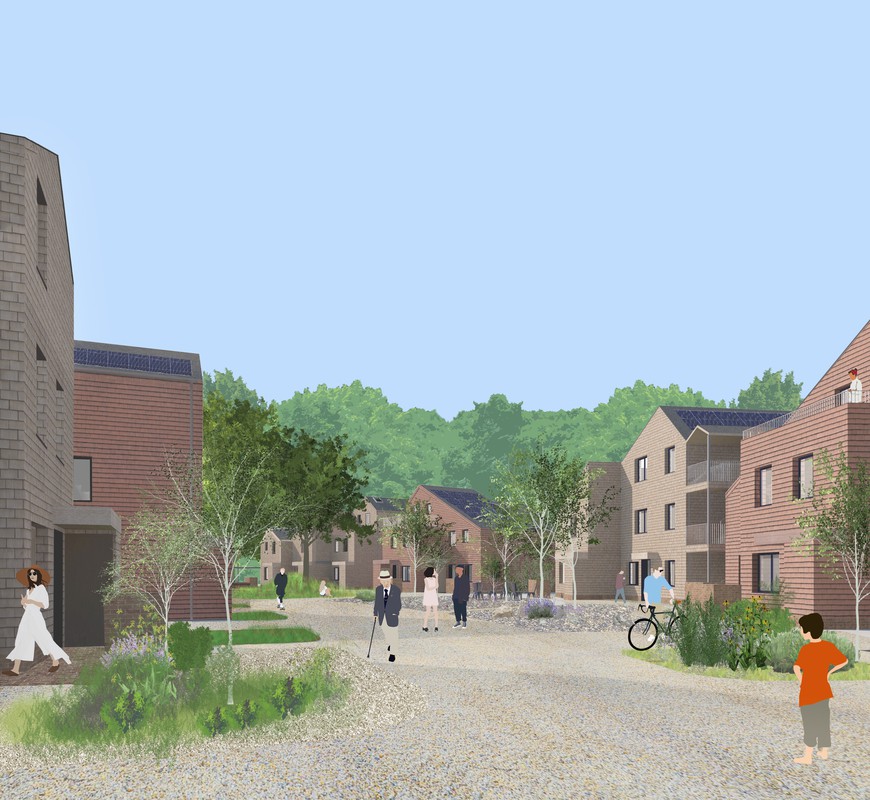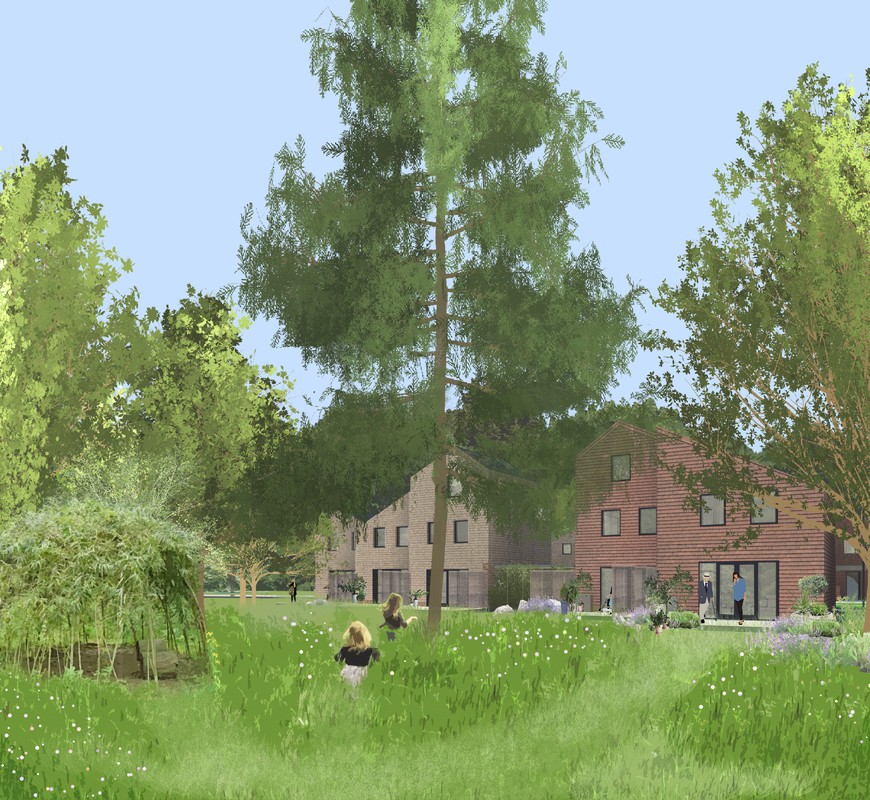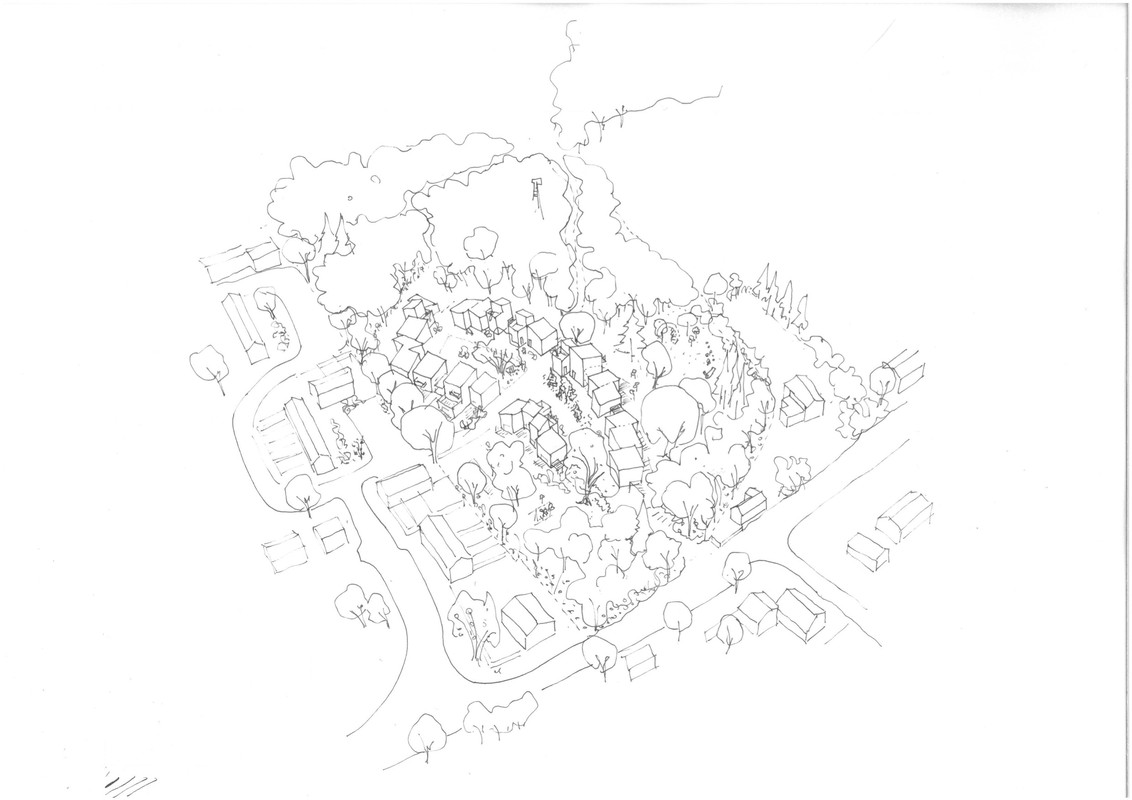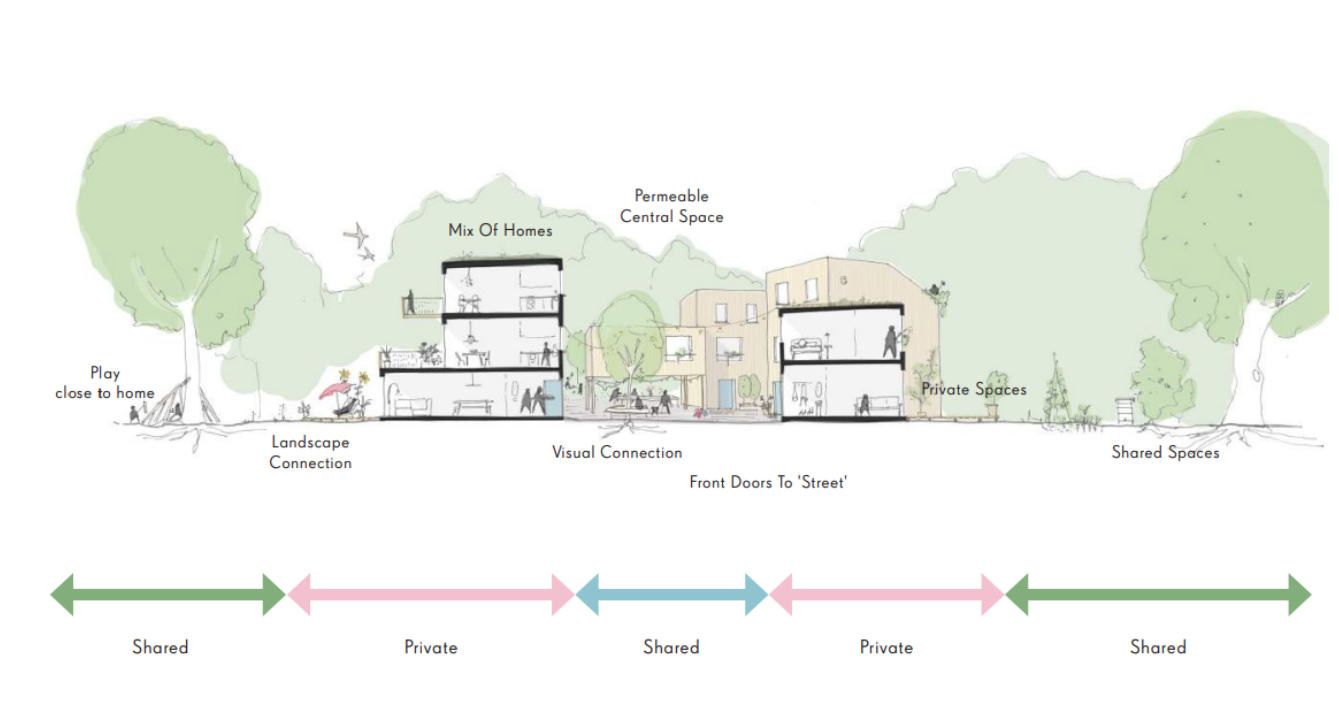Chobham Village
Intergenerational affordable housing in Surrey
Location
Surrey
Status
Concept
May 2024
Client
Bioregional
RIBA workstages
Concept
LOCATION
Chobham, Surrey
STATUS
Planning Determined 2021
CLIENT
Bioregional
BUDGET
Undisclosed
RIBA WORKSTAGES
RIBA 0 – 2+
Size
16,000 m2
This project is a collaboration between Waugh Thistleton and Bioregional to create thirty new, low carbon affordable homes on the edge of the green belt in Surrey, England.
The innovative approach adopted by Bioregional was to support the local community through the formation of a Community Land Trust (CLT) aimed at end user residents facing financial stressors impacting their ability to remain in the Chobham village community London CLT provides ‘intermediate’ affordable housing to Londoners ‘priced-out’ of their communities because they cannot afford decent, open market housing, but are unable to access other forms of affordable housing. The scheme would provide reduced market sale homes designed with input from the residents of Chobham, which would be discounted in perpetuity and managed by the community itself.
Community cohesion and collaboration has been embedded in the design process. A Local Housing Needs Survey was undertaken to determine the collective demands of the community, accompanied by collaborative co-design workshops with Chobham’s residents to inform our design process. The resulting scheme was carefully authored to reinforce a strong sense of community and to encourage multigenerational living and an immediate access to nature.
Through these workshops, we envisioned a space that promoted multigenerational integration, where adults and children can interact and assist each other in day to day activities. With this in mind, all the homes have been designed around key communal spaces, rather than streets, oriented around seating areas and open space where children can play. Rear gardens are open to the beautiful woodland beyond so children can walk and play freely in the surrounding nature, with carparks located at the edge of the site to ensure the safety of the communal areas.
Special attention has been paid to preserving and managing the woodland on which the site is situated. To preserve the existing natural landscape as much as possible, trees have been individually graded to inform a highly targeted approach of retention and removal of existing vegetation, with a management and biodiversity strategy integrated within the approach of the master plan.
Despite the positive feedback in response to the design and place making for this scheme, supported by the Local Housing Needs survey, the affordable model was not supported in the NPPF’s mechanism for a Rural Exception Site located on the Green Belt. Nonetheless, our journey continues in exploring this model for other locations.



